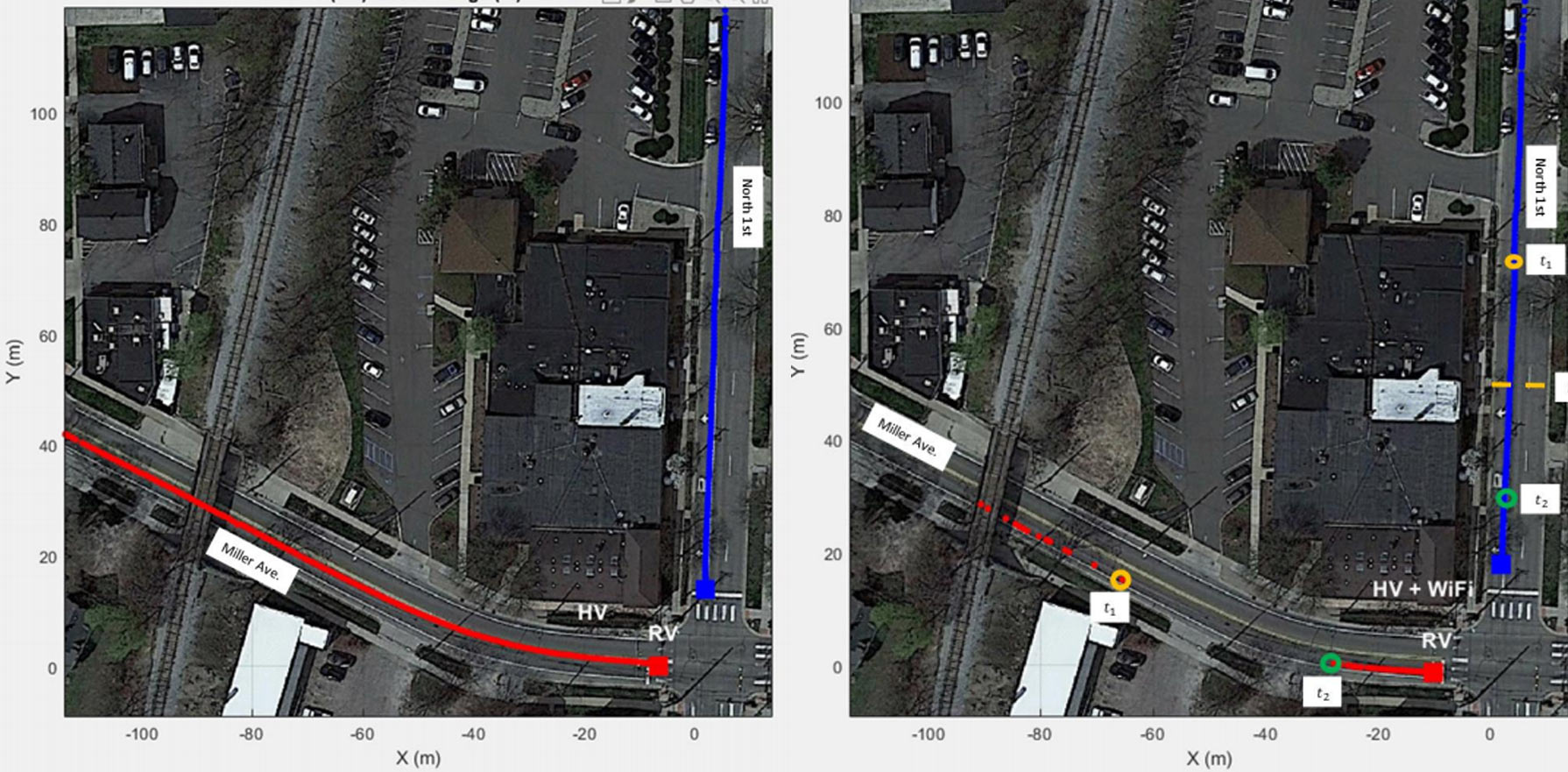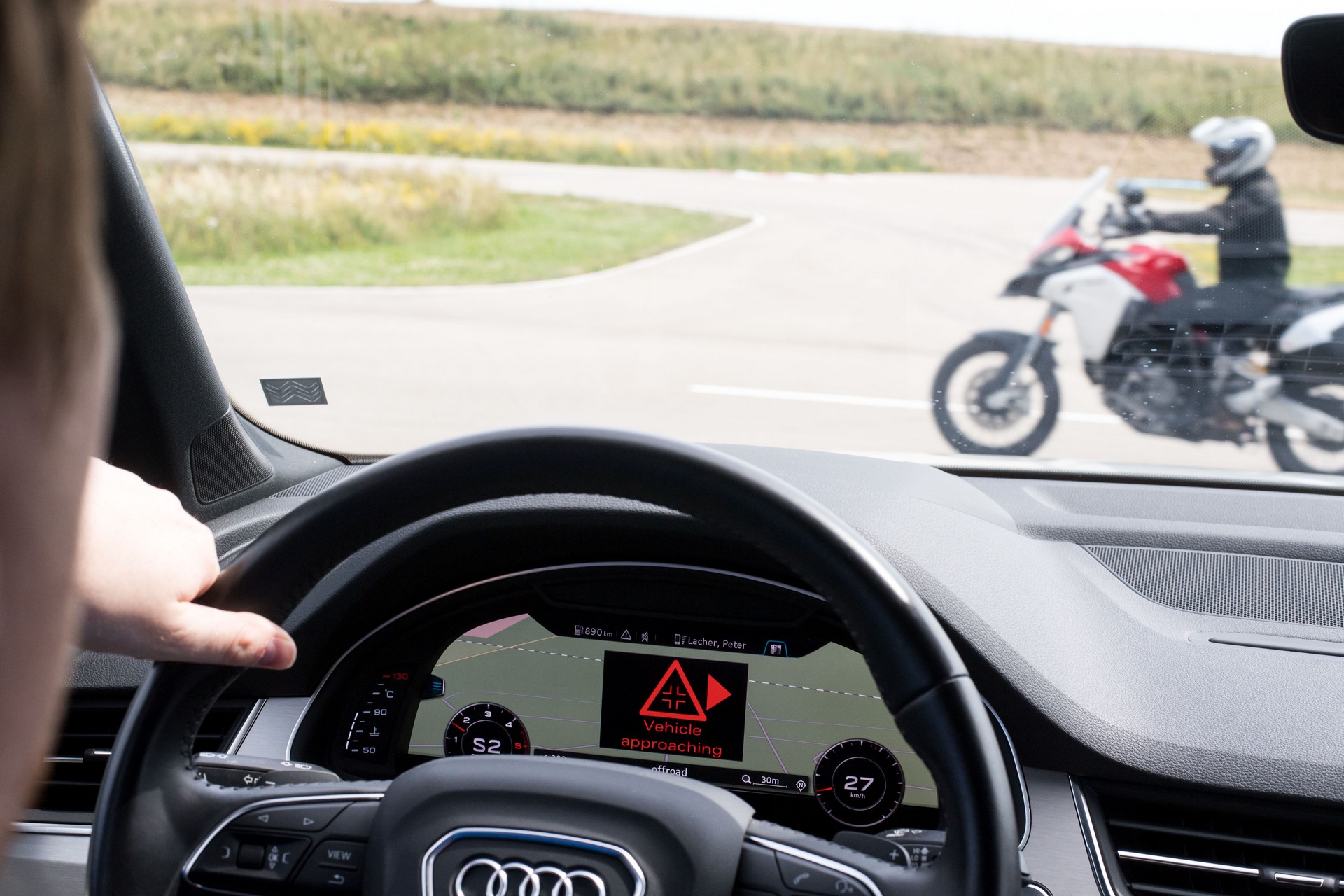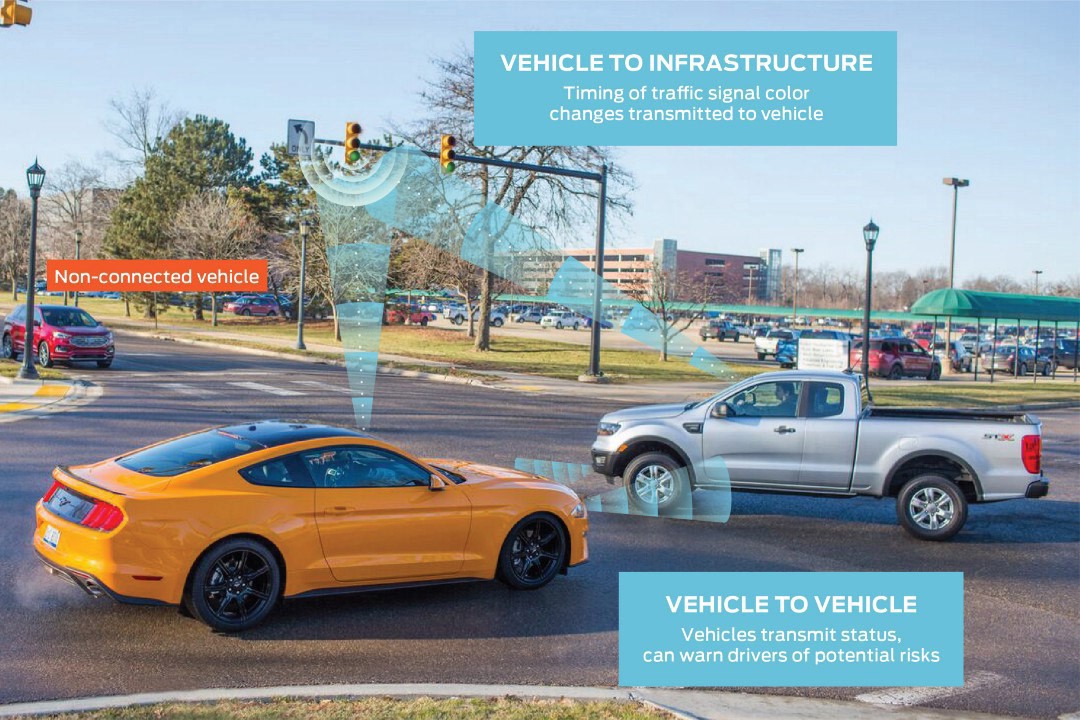Vehicle-to-Vehicle (V2V) and Vehicle-to-Everything (V2X) communications technology has the potential to make driving safer and less stressful, so it’s alarming to hear that WiFi signals could interfere with them.
As noticed by Consumer Reports, Ford’s Executive Director of Connected Vehicle and Services wrote the Federal Communications Commission (FCC) to tell them their research has shown WiFi signals can cause interference which “prevents our vehicles from being able to instantly communicate with one another, or their surroundings.”
Don Butler went on to say “This interference undercuts real-time signals meant to protect pedestrians, prevent crashes, and identify traffic patterns.”
Also Read: BMW, Ford And PSA Team Up To Showcase The Life Saving Benefits Of V2X Technology
In documents submitted to the FFC, Ford noted “In the field tests … we observed complete loss of Basic Safety Message reception when interference was turned on and the vehicles were more than 30m [98.4 feet] away from the intersection. This implies that any safety application that relies on V2V communication would fail to produce a timely warning to the driver at speeds greater than 25 mph [40 km/h].”
The issues are unsurprisingly technical, but can be chalked up to wireless spectrum. As the publication noted, back in December, the FFC proposed reallocating some spectrum set aside for V2X technology to expend WiFi. However, this appears to result in some interfere between the two.
Consumer Reports had been skeptical about the proposed change and the latest development is bringing up serious concerns. As their vice president of advocacy, David Friedman, stated “If you’re going to eliminate more than half of the spectrum dedicated to saving lives, then you really need to have your data, and your ducks in a row.”
They’re being supported by the Alliance for Automotive Innovation which released a lengthy paper condemning the FCC’s proposal. It says “The Commission’s proposed band plan fails to ensure that V2X communications are adequately protected from harmful interference, and in so doing, effectively forecloses use of the band for any V2X technology.”
The group went on to say “Successful functioning of V2X requires the Basic Safety Message to be transmitted 10 times per second. This constant communication between and among vehicles and infrastructure plays a critical role in reducing motor vehicle crashes. It is essential that the Commission’s rules enable V2X transmissions absent harmful interference.”
What happens next remains unclear, but a number of technology companies have been pushing the FCC to follow through with their proposal. However, the new findings could give them pause.







